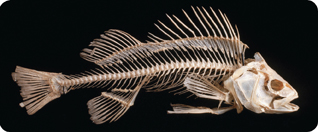
FIGURE 26–8 Bony Fishes Bony fishes, such as the perch this skeleton once belonged to, have skeletons made of true bone. Compare and Contrast List two ways that bony fishes differ from the fishes in Figure 26–6.
Bony Fishes Another group of ancient fishes evolved skeletons made of hard, calcified tissue called true bone. This launched the radiation of the class Osteichthyes (ahs tee IK theez), the bony fishes. You can see the skeleton of a modern bony fish in Figure 26–8. Most modern bony fishes belong to a huge group called ray-finned fishes.
▸ Ray-Finned Fishes Ray-finned fishes are aquatic vertebrates with skeletons of true bone; most have paired fins, scales, and gills. The name “ray-finned” refers to bony rays connected by a layer of skin to form fins. The fin rays support the skin much as the thin rods in a handheld folding fan support the webbing of the fan. Most fishes you are familiar with, such as eels, goldfish, and catfish, are ray-finned fishes.
▸ Lobe-Finned Fishes Lobe-finned fishes are a different group of bony fishes that evolved fleshy fins supported by larger, more substantial bones. The few modern fishes that are descendants of ancient lobe-finned fishes include lungfishes and coelacanths (SEE luh kanths). Another group of ancient lobe-finned fishes evolved into the ancestors of four-limbed vertebrates, or tetrapods.
VISUAL SUMMARY
FROM FINS TO FEET

FIGURE 26–9 The cladogram shows a few of the animal groups in the evolution of the feet of tetrapods from the fins of ancient bony fish. All of the illustrated animal groups are extinct.
Table of Contents
- Formulas and Equations
- Applying Formulas and Equations
- Mean, Median, and Mode
- Estimation
- Using Measurements in Calculations
- Effects of Measurement Errors
- Accuracy
- Precision
- Comparing Accuracy and Precision
- Significant Figures
- Calculating With Significant Figures
- Scientific Notation
- Calculating With Scientific Notation
- Dimensional Analysis
- Applying Dimensional Analysis




